Floor Cleaning Tips And Tricks For Contractors
Jay Goldberg 2 comments
If you are a contractor, you know that one of the essential parts of your job is making sure that your client's floors are clean. Contractors often have to deal with dirty and sticky floors, knowing how difficult it can be to clean.
Contractors put in a lot of hard work to keep their facilities, and the floors in particular, looking great. This can be difficult when so many things can happen to make your flooring dirty, but luckily there are some effortless ways to keep them looking their best.
One way contractors can ensure they have a clean space is by using a wet vacuum. This will remove any debris from the floor while preventing dust from being kicked up during this process.
This blog post is a guide for contractors who want to clean their floors the right way! We will talk about different types of flooring, materials needed, cleaning solutions we recommend for each flooring type, and care tips that will help keep your floors looking great all year long.
Use these handy tips and tricks for keeping your facility spotless!
What Is Floor Cleaning?
The term "floor cleaning" is a generic name for various products designed to clean any flooring. More specifically, floor cleaning refers to the process of removing dirt from floors using particular types of cleaners and equipment. A plethora of different types of equipment exists, suitable for all kinds of surfaces and more or less dirt. Floor cleaning equipment is usually divided into different categories, including vacuum cleaners (i.e., suction sweepers), floor polishers, buffers, and floor dryers (i.e., electric or air mops). Removing dirt from surfaces using special cleaners is known as "floor cleaning."
Cleaning floors should be done regularly to prevent the buildup of harmful substances. After cleaning, the liquid left on the floor should be immediately wiped up with damp mops or applicator pads. Cleaning floors can be done with various tools, including dry mops, wet mops, microfiber cleaning pads, and scrub brushes. The specific type of floor cleaning equipment used will vary based on the size and shape of the room or surface being cleaned.
Regular deep floor cleaning is essential to reduce the buildup of dirt and grime, which can cause several different health problems. Other types of bacteria, fungi, and allergens can build up on floors over time. Regular cleaning can help reduce the risk of these harmful substances building up in homes or businesses. The frequency with which floors should be cleaned will depend on several factors, including traffic levels, type of flooring, and amount of footfall. Proper floor cleaning should result in a floor that feels clean and looks clear of dirt, grime, or other substances.
The Benefits Of Using This Guide As Your Floor Cleaning Reference
- You will be able to clean any type of flooring without having any issues or complications.
- Remove dirt, dust, and grime effortlessly from even the most delicate types of flooring.
- Learn how to properly use a floor mop and bucket to enhance your finished results.
- You can use the information in this guide to maintain clean floors on an ongoing basis.
- Your customers will be more than satisfied with your artistry, which means you will get great job referrals to new potential customers.
Even if you are not a professional cleaner or have never cleaned floors before, this guide is a must-have for anyone who wants to provide a quality finished result.
Types Of Floors And How To Clean Them
The most common floors are carpeted floors, hardwood floors, tile floors, laminate floors, stone floors, and vinyl floors. Each one requires a different technique to clean them properly.
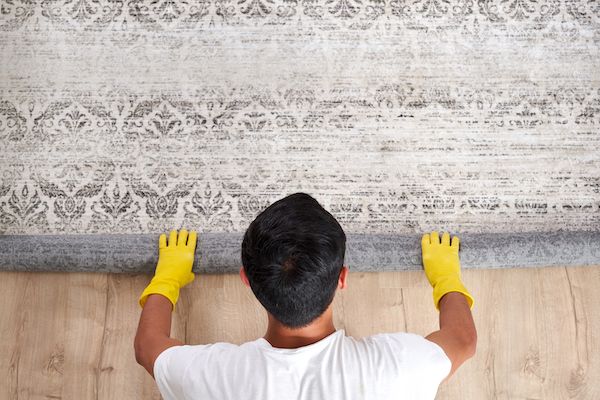
Carpeted Floors
Everybody knows that floor cleaning is essential. Regular whole-house deep carpet cleaning benefits everyone in the house, especially those with allergies or asthma because carpets act as filters to remove contaminants from the air. Once you've decided that your carpets need professional care, it's essential to understand all there is about floor cleaning by hiring a local carpet cleaning company with a spotless reputation. The right floor cleaners will ensure that your carpets are dry in 1-2 hours after being treated, not the following day. A good cleaner knows the right way to remove dirt and different soil types and can clean different types of flooring, including hardwood floors, safely.
The best way to clean any carpeted floor is dry foam deep cleaning using a strong rotary brush machine because it's been tested and proven many times. So, if your carpets need dry foam deep cleaning, you should opt for this type of service rather than steam carpet cleaning or other more expensive methods. If you want a local carpet cleaner to come and do a spotless job at a reasonable price, you should know that the best choice is a company with strong references from previous customers. Some companies offer free inspections and have flexible hours – day and night – for appointments. By selecting an experienced floor cleaning company, you also ensure that the process will be safe for your pets and children.
In addition, a professional floor cleaner can provide you with a free estimate of the costs, which will be very helpful in planning your budget for floor cleaning. You can find a variety of local carpet cleaners by simply searching on the Internet, but the best way is to ask trusted friends or neighbors who have carpets in their homes. If you have a lot of carpets to clean, it's best to hire a floor cleaning service that offers an excellent volume discount price.
Local carpet cleaners with good experience and high-quality equipment are needed for whole-house deep carpet cleaning. If your budget allows, use another company if your first choice is unable to do the job, but if you choose another one, make sure it's not below your expectations.
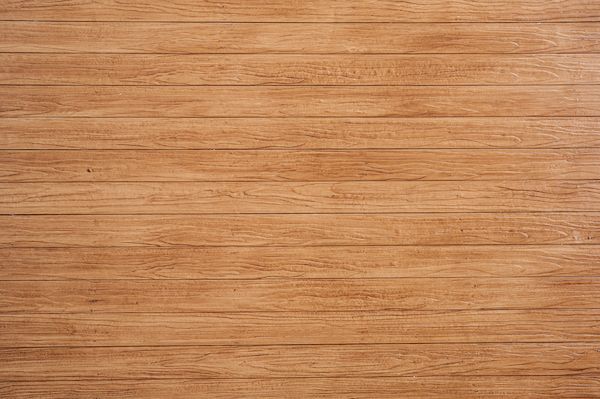
Hardwood Floors
Your answer must be a hardwood floor vacuum cleaner because it can pick up dust and other small stuff from the crevices of each floorboard. However, not all vacuums are made equal for this job.
Firstly, you have to consider your needs before buying a hardwood floor vacuum. If you have pets at home, you should get a vacuum to handle pet hair. If you have small children at home, the vacuum should have an adjustable height to avoid accidentally bumping against your kid's head. Then, check if the flexible hose is long enough for you to reach all parts of your floor without too much effort. You don't want to get tired each time you clean your floors.
Next, the hose should have a telescoping function because it will let you adjust the length to fit your height. If possible, choose a vacuum with swivel steering to make turns more accessible and faster. After that, check if the entire body of the vacuum is balanced enough for easy movement across hardwood surfaces. Some vacuums are made with too much weight in the head, making them difficult to turn. Lastly, check if the vacuum is equipped with onboard storage for the hose, extension wands, and other tools.
Once you have chosen your dream hardwood floor vacuum cleaner, remember to empty the dirt cup frequently, so you don't have to stop to dump it out every few minutes. You can also consider getting a handheld vacuum cleaner if the regular vacuum is too bulky for you. Handheld vacuums are lightweight and very easy to maneuver, so expect quick and efficient performance once you get one. As long as your floor is covered with hardwood, any household or industrial vacuum should do the trick. However, there are certain features that you have to prioritize to ensure safety and maximum performance across any wood surface.
Hardwood floors are beautiful because they can manage heavy foot traffic without creaking or making other irritating sounds. They also add warmth and elegance to your home, so you must maintain them properly using the right household products and cleaning tools. When it comes to hardwood floors, the most crucial factor that you have to consider is safety. Check if the vacuum cleaner you choose has non-scratch wheels not to damage the wood surface as they roll along. The wheels should also be rubberized to pick up dust and dirt without scratching the floor.
To ensure that your hardwood floors are free from dirt, you need to vacuum at least once a day. If possible, choose a long-handled vacuum with adjustable height so you can easily clean beneath furniture without too much effort. You may also consider getting an upright or canister type of vacuum cleaner because they are designed with powerful suction that can pick up dust and other small particles in hard-to-reach areas.
However, you must remember that anything with a rotating brush should be avoided because these brushes are powerful. They don't rotate at low speeds, so they can cause serious damage, especially when used on wood floors. On the other hand, commercial vacuums are specifically designed to clean hard surfaces, including tiles, vinyl flooring, laminate floors, marble floors, and others. These vacuums have powerful suction that can pick up dry and wet debris, including dirt, dust mites, hairballs, and other stains.
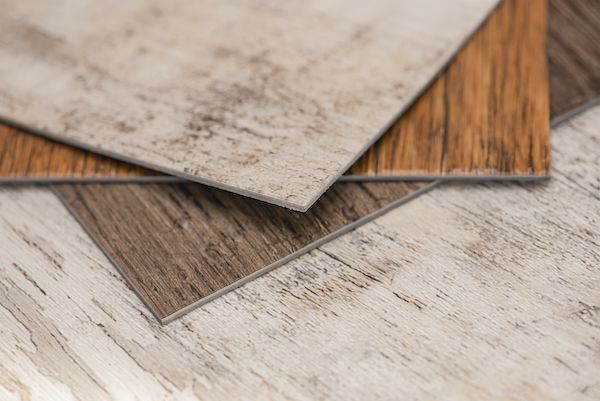
Vinyl Floors
People usually notice the need to clean vinyl floors when they become dirty. But what is the best way to see the charming shine of your floor once again? Cleaning vinyl floors can be done by applying ammonia, vinegar, or alcohol to a cloth and cleaning the floor. If you are using ammonia to clean vinyl floors, avoid mixing it with bleach or other cleaning agents because it can cause damage to the floor's finish. You need to apply ammonia, wipe it away, and rinse the floor with water.
If you are planning on using vinegar to clean vinyl floors, be aware that it will create a strong smell when in contact with the floors, so be sure to ventilate the room before using it for cleaning. What you need to do with vinegar is to mix it in a bucket of warm water and then use a cloth or sponge to wipe the floor clean with this mixture. Steam cleaning will help clean floors with remaining dust. The water and vinegar solution will help clean the wood floor precisely.
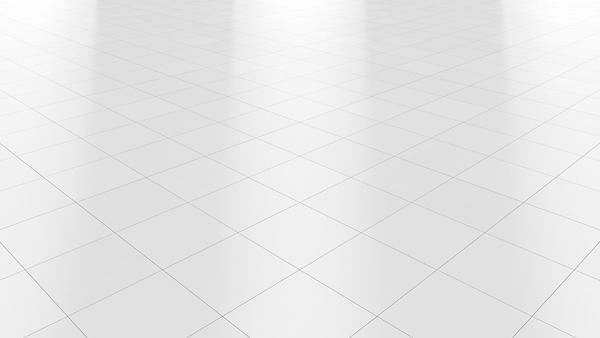
Tile Floors
We have a pretty good idea of how to clean a tile floor, but what is it? Floor cleaning is part of any house-cleaning routine. A tile floor consists of two primary components: the grout that bonds the tiles together and the tiles themselves. Grout lines can accumulate dirt, dust, and debris from everyday traffic, while the tiles themselves may have stains from spills and dirt tracked in from outside.
What Tools Do I Need?
Floor cleaning should be done with a mop or a broom, depending on which part of your floor you want to clean. If your floor has a gritty texture, use a broom first to get rid of the bigger pieces of dirt. Then, wet your mop and use it to wipe up the rest of the grit.
If your grout has deep stains, you may need a stiff brush. A scrubbing machine can also be used for this purpose. Any tools you use must be specifically designated for cleaning tile floors, to prevent damage to the surface.
Will I Need Anything Else?
Yes - cleaning your tile floor will require several different household products, including white vinegar, dish soap, and baby oil.
Start by adding white vinegar to your water solution – two parts water to one part vinegar. This is a great multi-purpose cleaner and will soften up any stains on the grout.
You'll also need some dish soap, which can be used to remove any tough stains on your tiles. Baby oil is another useful product you might want to keep around for floor cleaning. It is very effective at removing sticky buildups of dirt and grime.

How Do I Clean Tile?
To start cleaning your tile, mop the floor with your vinegar solution, allowing it to sit on the tiles for a couple of minutes before wiping it off. Rinse your mop head thoroughly after each swipe, so you don't reapply dirty water onto the tiles.
When dealing with grout stains, use a scrubbing brush or machine to work in soap and the white vinegar solution. Keep at it until the stains lift, and rinse off all residue. Use a damp cloth to go over any remaining grout lines that still have soap residue on them. Dish soap is your best bet for removing tough dirt from tile surfaces. Spritz some onto a sponge and gently work it into hard-to-remove marks.
It's best to tackle tiled floors on a dry day rather than when it's excessively humid or wet outside. A wet mop head can spread dirt around your tiles, which will only make the job harder. Only clean one section of the floor at a time, using a fresh bucket of solution for each part.
Tiles are porous by nature, which means that you will never be able to remove all stains from them. You can try removing as many stains as possible with the tools and products mentioned in this article. Some stubborn stains may remain, however.
When cleaning tile, just make sure not to use bleach products, which can damage even the most challenging tiles. The final step is to dry your floor with a towel or cloth. Ensure that all excess moisture has been absorbed before walking on it in socks or shoes. After you've completed this process, be careful about where you place furniture and other items in your home to avoid marking up the floor.
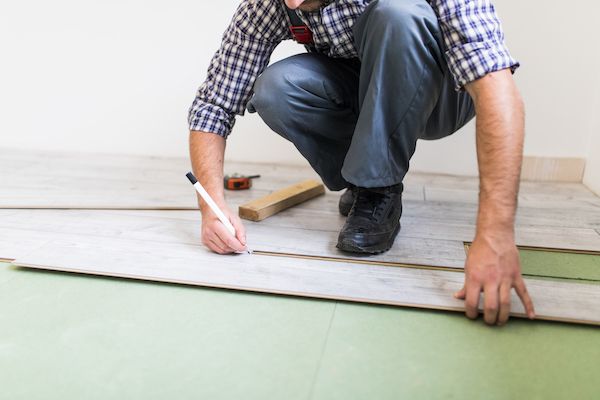
Laminate Floors
Laminate floors are best cleaned with a vacuum cleaner or a broom. Sweep or vacuum the floor daily to remove sand and grit that could damage the surface. A soft broom can be used for this purpose.
It is advisable not to use plain water when cleaning laminate floors. Mop your floor with clean water mixed in a mild eco-friendly cleaning solution every week to remove the dust and dirt. Dry the floor with a clean cloth or absorbent paper.
Stone Floors
Many people do not realize that it is possible to clean stone floors. Stone does not absorb liquids, so you would think, why bother with caring for stone at all? But there are several ways of cleaning natural stone surfaces without damaging them. Knowing how to clean stone floors helps maintain stone for flooring surfaces or interior decor.
You can take simple steps to keep your stone floors clean and improve their appearance. Sand-colored natural stones such as marble, travertine, limestone, cotton, onyx, and granite are examples of the most commonly used stones for interior flooring. Many of these stones are more porous than others and need more attention. So before we can discuss how to clean stone floors, we should first know the differences between these different types of stones and what kind of maintenance each requires. It is recommended that you consult a professional for specific advice like cleaning stone floors.
The easiest way to clean stone flooring is by vacuuming. For example, you can use a sizable industrial-size vacuum with an adjustable rubber nozzle to make sure not to scratch or scour the floor's surface while cleaning it. You should also pay attention to how hard you sweep, especially when using an old mop or broom. Rough bristles could easily scratch the surface of the stone. It is best to use soft bristles. It is also essential to wipe up spills immediately because certain liquids temporarily damage your stone flooring. Acidic foods and drinks can dissolve the stone's surface finish if left standing for too long. Also, be careful to remove all soap residues.
When mopping the floor, use only neutral or mild pH soaps and soft cloths. Do not use abrasive cleansers, scouring pads, or sponges because these may scratch the stone's polished surface. Your mop can be made of natural or synthetic fibers. But if the floor is sealed (recommended), do not use mops with metal parts that may scratch the surface. Do not let any liquid stand on your stone floor for too long, especially in spaces where it is directly exposed to sunlight because it will start to absorb this light, and it may cause a slight color change. This is another reason why it is essential to wipe up spills immediately.
Another common problem when you are trying to keep marble floors clean (for example) is the presence of water stains, especially when the stone has not been sealed or when it has been improperly cleaned with acidic household products. If this happens, you can clean the marble floors with a mild cleaner, like vinegar or lemon juice. Be careful not to rub the stain too hard because it will worsen. You should let the mixture stand for about 30 minutes before wiping it away with water and a soft cloth. If this doesn't work, you can also try baking soda.
The most important thing is to take your time, and be patient and methodical when cleaning stone floors of any kind. You should also pay attention to how you are using the products because some might damage the floor itself. If this happens, make sure you clean it immediately with a neutral cleaner before it can penetrate too far into the stone's surface.
Post-Construction Cleaning
Post-construction cleaning is a crucial step in the building process, and it is often left untouched or done incorrectly. However, if you clean your floors thoroughly after construction and before moving in, you can save yourself time and effort later.
Post-construction cleaning using a sponge mop will help you get maximum benefits. Flooring types need different treatment after the construction process, but these tips apply to most. Post-construction cleanup will help deep clean the area and prep the space for move-in.
Tile Floor Cleaning
Tile is porous, so it will absorb anything. It needs to be thoroughly washed with soap and water because any dirt or dust in the tight spaces between tiles can develop into stains later on. Make sure you wash all tiles, including under cabinets and along walls, because this is where most of the dirt hides. Be careful when cleaning tile around toilets because you might disturb grout joints and end up with stains. If you have to move heavy furniture, install the floor first and do all other work around it.
Stone Floor Cleaning
Although stone is one of the most challenging and durable materials for floors, it can quickly show dirt. Granite is porous, meaning that it will soak up any liquid it comes in contact with. Clean stone tiles and slabs with a mild detergent and water, dry thoroughly to avoid streaks or stains, and seal it afterward because the natural material will not protect itself from liquids.
Marble floors are similar to granite, but they need more protection because marble is softer. Clean marble floors regularly with a unique marble cleaner and seal it to keep out liquids that can stain, etch, or damage the floor.
Ceramic Floor Cleaning
With ceramic floors, you need a mild detergent and a damp mop. The grout between tiles is porous, so use a sealer to avoid absorbing dirt and liquids after cleaning.
Vinyl Floor Cleaning
Vinyl is a challenging and durable flooring material, but it can also be susceptible to dirt. You first need to clean it with a damp mop and soap, rinse thoroughly, and allow the floor to dry before moving in. Next, coat the bottom with an appropriate sealer because vinyl cannot protect itself from liquids without one.
Linoleum Floor Cleaning
Cleaning linoleum is similar to cleaning vinyl, but you need to work in small sections because it can quickly discolor or warp if exposed to too much water. Then you need to apply a sealer that is suitable for this material.
Hardwood Floor Cleaning
The best way to clean hardwood is with a vacuum cleaner. Remove dust, cobwebs, and dirt using the brush attachment of your machine. Then use soap and water to clean different sections of the floor at a time. Clean thoroughly in small areas (4-5 feet by 4-5 feet) because wet floors can warp or stain easily.
Rinse with water as soon as you finish cleaning each section and allow the floor to dry before moving in. Then, apply a sealer that is suitable for your type of wood. It is better to use two coats of sealer instead of one thick coat if you want additional protection because later coats will protect earlier ones from scratches and dents caused by pets or heavy furniture.
Wooden Floors Cleaning
Clean wooden floors with soap and water and a damp mop, rinse thoroughly, and dry to avoid warping or staining the floor. Then apply two coats of sealer for additional protection and color enhancement.

Floor Polishing Tips For Different Types Of Floors
Ceremony floors require special attention when it comes to polishing. You need to clean them with a dry mop and some cleaner, and let the surface dry completely before you start polishing it with a particular machine. Buffing can damage wet surfaces, so some specific types of floors may require more than one process.
Ceramic tile flooring benefits from abrasive cleansers because they efficiently remove stubborn dirt, but make sure you rinse with water afterward. Stone floors are sealed, so they require special moisture-resistant cleansers or cleaners that clean and protect your floor at the same time. Vinyl floors will get polished with a machine fitted with an appropriate pad. Apply two coats of polish to seal, buff it in sections, and let each area dry between coats.
Hardwood floors will get polished with a machine fitted with an appropriate pad, but you may need several tools to complete the job. Use coarser grains for the initial cleaning process, then use more delicate pads when polishing the floor because they are much more efficient at getting rid of scratches or blemishes. Linoleum floors need to be cleaned with a damp mop and softer cleansers because harder ones can damage them. Apply two coats of polish for color enhancement and protection, let it dry between each coat, and buff it out carefully with a particular machine or by hand.
Natural stone floors require exceptional polishing techniques. Clean them with a unique cleanser and let them dry, then use an appropriate machine to apply polishing cream and buff it evenly. Wood floors need two different types of cleaning: one for the initial removal of dirt and another to polish and protect. Use coarser grains for the first step, then switch to finer ones when you are ready to shine and protect the floor.
What Is The Most Effective Way To Clean Floors?
This question will always be quite challenging to answer for anyone who doesn't have the opportunity of doing it daily. What type of floor brush is best suited for the task? What is the safest way to vacuum my wood floors without having them scratched up or damaged? How do I remove sap from my laminate flooring?
These are only a few of the many problems that cleaning professionals deal with daily while working in people's homes. The best way to learn these tips and tricks is through extensive training and practice. However, if you are pressed for time, you can always refer back to this post, which is a one-of-a-kind floor cleaning guide from industry professionals who have been cleaning floors for decades.
This guide is jam-packed with helpful information that will help you clean most types of flooring in your customer's homes outstandingly well. It is also an invaluable resource for companies looking for new tips and tricks to pass on to their employees to provide their customers with the best-finished results.

What Are The 5 Floor Cleaning Processes That Make Floor Cleaning Successful?
Floor cleaning requires a great deal of patience. To clean your floors properly, you should follow the five steps below:
1. Vacuum Cleaning
Vacuum-cleaning your floors is a must to remove loose debris and dirt. After which, you can work on the areas that need special attention.
2. Scrubbing
Heavy stains can be treated using a scrub brush and soap, while lighter colors can be handled with the help of a diluted vinegar solution. First, spray the floor with water to wet it thoroughly. Then apply detergent or vinegar on the area you want to clean and let it sit for a few minutes. Once the detergent has done its magic, use a scrub brush to remove the dirt and rinse it with water.
3. Drying
Properly dry your floor before you leave to make sure no moisture remains. This will prevent bacteria from growing in wet areas and ensure no one slips or falls. Use a dry mop or a towel to take care of damp floors.
4. Stripping
If you want shiny and clean flooring, you should strip your floor at least once a year. This will remove old wax from the surface and help the new coat adhere better. Wash the floor with warm water mixed with gentle dishwashing soap. Then use a few drops of oil to add shine and remove residue from your flooring.
5. Waxing
Wax your floor every three to four years or after stripping the old wax if you are looking for extra sheen. You can apply wax with the help of a machine twix floors, but be careful when you are doing the job at home. Powdered floor wax works best for this purpose, so look for it in your local hardware store.
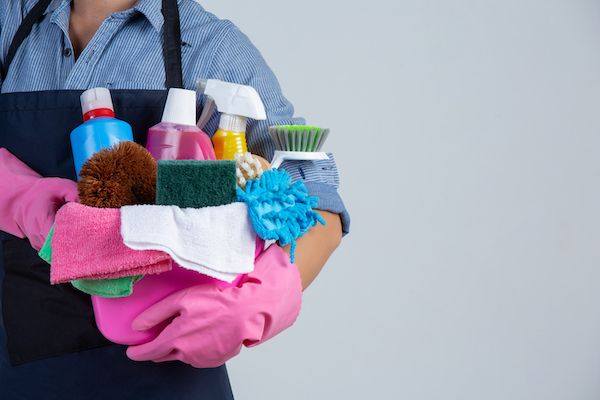
What Are The Materials Used In The Commercial Floor Cleaning Process?
There are several tools and equipment you can use to clean your floors. Dry mops, wet mops, small brushes, handheld vacuums, scrub brushes, power scrubbers or buffers, squeegees, and carpet sweepers are some of the cleaning devices that will help you get the job done.
You may need to use a stripping agent for floor stripping, either an emulsifying wax or powder stripper. If your floors are made of metal, rubber, stone, or other specific materials, don't apply commercial floor cleaning products directly to them. Instead, dilute the product and apply it with a microfiber mop or applicator.
Be sure to read product labels to know how much water you should use, as different products require different amounts of water. Ensure that you don't leave the cleaning solution on your floors for too long because it can damage them.
How Do You Maintain Proper Hygiene During The Floor Cleaning Process?
For the whole process to be successful and ensure that your floors are clean and germ-free, you should maintain proper hygiene during all five floor cleaning steps. Also, wearing gloves while scrubbing and rinsing will prevent germs from spreading. It's also essential to use a disinfectant cleaner to wipe down surfaces before you start working on them again.
What Are The Different Types Of Floor Surfaces, And What Equipment Do You Require To Clean Them?
There are various types of flooring, such as vinyl, ceramic, marble, wood, laminate, and carpet. The right equipment will depend on the type of flooring material you have at home or in your business establishment. All you need is a vacuum cleaner, mop, and bucket for vinyl floors. For laminate floors, you need to have separate equipment for the kitchen area and the rest of your house or office.
How Would You Know Whether A Machine Is Safe To Use On A Specific Type Of Floor?
The best way to figure out what equipment can be used on your specific floor is by checking the label on its package or contacting the manufacturer directly. In addition, most cleaning equipment is divided into four categories according to the material they are designed for. The four categories of floor-cleaning equipment are:
- 1. Dry mops and applicators
- 2. Wet mops, sponges, scrub brushes, and applicators
- 3. Power scrubbers or buffers
- 4. Squeegees and carpet sweepers
.jpg?width=600&name=woman-with-rubber-gloves-cleaning-floors%20(1).jpg)
Are There Any Specific Safety Tips That You Should Follow During Floor Cleaning?
You should pay special attention to a few areas while cleaning your floors. If you're using multiple chemicals, check their compatibility with each other before mixing them. Also, don't use plastic equipment as it may leave scratches and become brittle over time. If you are involved in floor cleaning as a contractor, these tips will help you. Some may not pertain to your area of expertise, but many can be easily implemented into your daily routine.
To ensure that you are using the right equipment, be sure to read labels or contact manufacturers directly. Some cleaning devices may not be compatible with certain flooring materials, so make sure that the product does not damage your floors in any way. Finally, remember to use proper safety gear while cleaning your floors.
Conclusion
As you can see, many different types of floor cleaning products and materials may be used depending on the surface to be cleaned. It is essential to know which kind of cleaner or material works best on each type of flooring to get the best results. Ensure to have proper training on the equipment necessary in order to do a thorough job safely and efficiently. Also, by using environmentally safe products that won't harm customers or workers, you will gain the trust of your customers, making them less likely to switch providers.
Vacuuming, mopping, and scrubbing are the most effective ways to clean floors. For your safety, always wear appropriate footwear when cleaning floors. Additionally, keep children under adult supervision while you're cleaning the floor.
Floors require regular care and attention to remain in good condition. Having a surface fully cleaned once or twice a week can help reveal the beauty of your flooring. This article explains each primary type of flooring and gives tips on adequately cleaning every kind of flooring. I hope this article about cleaning tips for commercial floor cleaners was informative and enjoyable.
Product Category: Floor Cleaning
Jay Goldberg 3 comments
Advantages Of Cleaning Industrial Floors With A Steam Cleaner
Jay Goldberg 1 Comment

2 comments